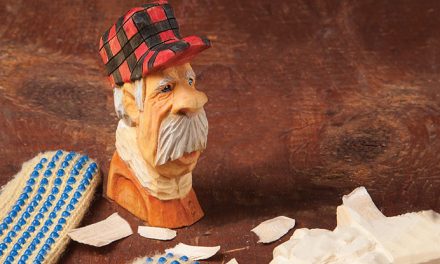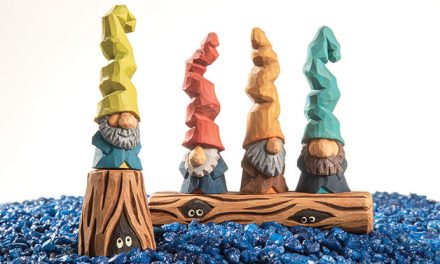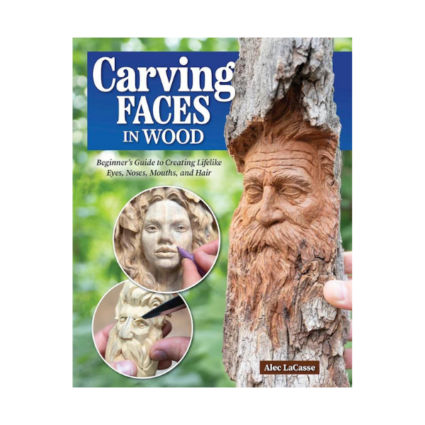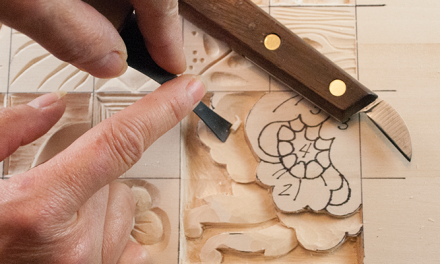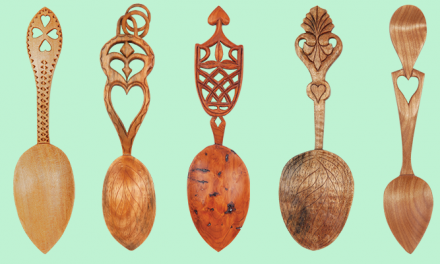
Ready to Start your Carving Journey?
Lifelong carver Alec LaCasse is known for his approach to carving naturalistic and stylized portraits with “found” materials. As the founder and lead instructor of Fundamentals of Woodcarving School, LaCasse has learned a thing or two about woodcarving. Woodcarving Illustrated caught up with Alec to talk about the six things he wish he knew before he started carving. Keep reading to learn more!
Knives were amongst the most coveted objects imaginable for me at the age of 12. And it was around that age when I was given a whittling kit from my mother. The kit included a bandsawed boot and a razor-sharp knife. Time seemed to totally escape me those 3 hours of whittling and that first project was where my excitement for carving began. That was 18 years ago and since then, and as a full-time carver, I have made about as many mistakes in carving as one person can make. So when asked to write an article about the things I wish I would have known when I started my journey carving, I didn’t struggle for ideas. Here are a few of the things I wish I knew then:
6 Things I Wish I knew Before I Started Carving
1. Learn to sharpen your tools properly

Most carvers, including myself, are half hearted sharpeners. For many, it is a necessary evil we all face, unless we resign ourselves to having someone else do it for us. But learning to properly grind your bevel with diamond, sandpaper, or stone, then working to finer grits, eventually moving to a strop is a necessary process that every carver ought to learn. Sharpening does not have to be an expensive endeavor but it does require a certain level of hard earned knowledge and patience.
2. Find a Mentor
I was a young man at the very dawn of YouTube and around that time it transformed from being a terrible dating site into a magical place to learn skills and be endlessly entertained. That said, nearly all of my mentors growing up were YouTube carvers. Certainly, in many ways, it is better to have an in-person mentor through a club, class, or a meeting, but for folks who just simply don’t have access to a group or want more instruction than a group can offer, the Internet can be a great place to find a mentor! Find someone who has a heart to teach and plenty of experience to back it up. There are plenty of great resources online for those looking.
3. Carve what You Love

You will have so much more fun carving a project that is about something you love. I love people. I love the human spirit! This is why I have chosen the human face as the subject of the majority of my work! If you love dogs, then by all means, spend your time learning to carve dogs! The craft of carving becomes an art form when you begin to put your heart into it!
4. Don’t Listen to The Naysayers
Woodcarving is an ancient art form with roots dating back thousands of years. Though carving is not fancy, flashy, or fashionable, it is, however, one of the most satisfying art forms imaginable. The sensation of a razor-sharp tool zipping through the fibers of wood, releasing a hidden masterpiece within, is a true joy to experience.
Carving takes grit, muscle, and keen perception. It is not for those who do not appreciate little details or minor discrepancies. It is for those who thrive on seeing things made beautifully. Carving requires constant concern for the shedding of unnecessary fluff for the sake of the necessary material left behind. It requires a calm mind and a busy hand. It is not for those who have no strength, unlike painting and drawing, to make a sizable carving you must have physical endurance and power!
Don’t mind those who claim that carving is only a dull hobby for the back porch retiree. It may not be trendy or cool but is an ancient art form to be held in high esteem!
5. Don’t Worry About Being Original
” Even in literature and art, no man who bothers about originality will ever be original: whereas if you simply try to tell the truth (without caring twopence how often it has been told before) you will, nine times out of ten, become original without ever having noticed it.”― C.S. Lewis, Mere Christianity
In other words, don’t waste time trying to be the most original carver out there. Focus on pushing yourself to do the challenging projects that make you uncomfortable! Go out into deeper waters where your feet don’t quite touch the ground, that is where you will find the most growth in your carving skills.
6. Carve, Carve, Carve
Don’t just carve when you feel like it! Carve when you are feeling resistant to it! Carve when you are feeling sad, happy, bored, or busy! Nothing will improve your carving skills more than just simply carving.
- An overview of tools like gouges, knives, and rifflers and the proper steps to handle them safely and efficiently
- The basics of human anatomy and how to draw inspiration from references and designs (with a helpful guide on taking your very own reference photos!)
- Carving techniques and tips like how to use the rule of three and the pyramid method.
- THREE original Alec LaCasse project designs to practice what you’ve learned


